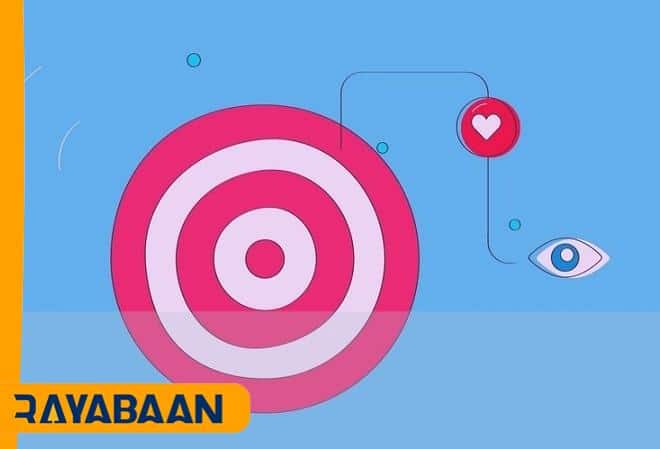What is content strategy for digital marketing?
What is content strategy? | Are you new to content marketing for your business or have you been using this method for a long time to promote your goals? Do you want to work hard in the field of digital marketing? In any of these cases, a content strategy will be the main pillar of your success.
Without a content strategy, you’re likely to jump from branch to branch, confusing yourself and your audience. Even if you’ve been active for a while, it’s important to review your content strategy to ensure your content is fresh, creative, and engaging with your potential customers.
Like some business owners, you may find a content strategy and digital marketing useful, but you haven’t taken the steps to implement them. So, RayaBranding‘s digital marketing department can help you with content strategy, even if it’s not important and interesting to you. This emphasizes that the perspective of today’s targeted and informed consumers is different.
Before reading the article, I suggest you watch the video to understand the importance of content strategy
If you plan to sell a product, launch a product, or even do business in the digital space, you should remember that the first step to succeed in a competitive market and effectively target your target audience is to have a solid and sensible content strategy to consider.
In this article, Poyan Maj’s ideas department discusses what a content strategy is, why your business needs a content marketing plan, and the steps you should take to create your strategy. We’ll also look at some examples of successful content marketing strategies for inspiration.

What is a content strategy in marketing?
Content strategy is one of the most important parts of digital marketing. It is a comprehensive plan that uses various types of content as a marketing tool to achieve your business’ business goals. A comprehensive and detailed marketing strategy should include the steps of producing and creating content, delivering and managing useful content, and tracking the results of content publishing. If your content strategy doesn’t start with a business goal, it’s not a content strategy, it’s just content.
To summarize, the content strategy consists of the following main parts:
- Goal setting (short-term, medium-term, and long-term)
- Brand description (brand identity, values, mission, vision, etc.)
- Description of the business or individual’s products and services
- Knowing customers and audience (demographic and persona)
- Competitor analysis
- Keyword research
- Customer journey map
- Content writing guide (tone, structure, SEO, colors, etc.)
- Channels and how to distribute content
- Content calendar
- Performance indicators
What are the advantages of developing a content strategy?
The benefits of having a content strategy are so many that if you don’t get it right from the start and continue to follow it, you’re just wasting your money and time.
In general, the strategy helps to get guaranteed and better results from content-based marketing. We can simplify these advantages as follows:
- Reducing the time spent on content creation
- Targeted content production
- Increase the probability of success
- Superiority and positioning relative to competitors in the market
- Reducing the cost and time of training employees
- Website SEO improvement
- Content Integrity
For example, your business goals may be to increase brand awareness and ultimately increase revenue. To achieve this goal, you can implement a content strategy that focuses on SEO to increase your website traffic in search engines (SERP) and traffic to your products or services by increasing organic traffic.
New business owners may think a content strategy is cool, but it’s not necessary when starting a business. However, producing high-quality content to meet business needs can help businesses build trust and connect with new audiences and ultimately achieve long-term success.
Importance of content strategy for business
The short answer to the question of why having a content strategy is important is no content strategy. You will float in whichever direction the wind blows. This can call into question the value and credibility of your business. The truth is that the content you create is useless and targeted. That content has little value to you.
How to create a content marketing strategy
Creating a content strategy requires in-depth knowledge of your field of activity and business goals. Ide Poyan Maji’s digital marketing department has an excellent history of creating a content strategy for companies to raise public awareness, recommends carefully answering the following questions to create and develop a successful content strategy:
1) Who is your personality?
Who is your content audience? How many audiences do you create content for? Just as your business can have more than one type of customer. Your content strategy can cover more than one type of reader or audience.
By using different types of content and channels, you’ll be able to deliver different content to each type of target audience and engage everyone your business works with.
2) What problem will you solve for your audience?
Ideally, your product or service will solve a problem faced by your audience. To create a comprehensive content strategy, you need to consider all of your potential and existing customers and create content for them. For example, some people may not know about the effectiveness of your product, while others may use your product to overcome their problems. You need to prepare and publish the content these people need.
3) What makes you unique?
Your competitors may have similar products to yours, which means your potential customers need to know what makes your product better or at least different. This is where content strategy comes in. To prove why people should buy your product, you need to prove that your product is unique.
4) What content formats will you focus on?
What will your content look like? infographic? The movie? Blog posts? Once you have decided on the topics you want to create content for, you need to decide which content format is best for showcasing your products and services.
5) On which channels do you publish the content?
Just as you can create content in a variety of different formats, there are also different distribution methods you can put your content into. Various social media platforms such as Instagram, Twitter, LinkedIn, and your web pages are popular ways to manage your content strategy.
6) How will you manage the production and distribution of content?
Figuring out how to create and publish all of your content can be a daunting task. Knowing who created what, where it was published, and when it will be published is critical to content strategy.
If you have the right answers to these questions and you plan to seriously invest in the future of your business, just contact Idea Poyan Maj of the Digital Marketing Department to help you formulate a content strategy and implement it step by step.
The most popular content strategy in marketing
Depending on a variety of factors, including business goals, business budget, and timing, your content strategy will differ from those of your competitors. However, here are some examples of popular content strategies based on different business goals:
Content Strategies for SEO
Content strategy and SEO work hand in hand. Most of the companies we work with at digital marketing agency Rayabranding are looking to increase organic sales and lead generation through content to significantly reduce advertising and sales costs.
But how to implement this goal? In recent years, content has been the most important part of any SEO strategy. Of course, technical SEO and external SEO are always part of the puzzle of success in search engine rankings.
Depending on your business, when your audience starts searching for the product or service they need, they want content that helps them find the answers and make the best decision for their final purchase. A specific example is developing a content strategy for a fitness trainer and nutritionist, such as how to become a professional trainer, and how much sports trainers earn. The best sports nutrition supplements for building muscle mass and such can attract the attention of various people in the path of the marketing sales funnel.
Content strategies to increase sales
The right content in the sales stage must be able to provide an appropriate answer to the customers’ possible questions and concerns about the functionality of the product. If your business offers building repair services, you need to showcase your skills and experience through your content. This will instill public confidence and lead to their demand for your services.
After-sales service planning
You’ve probably heard the famous saying that selling isn’t the end of the job. After-sales service and support will turn your customers into true followers of your business. It will introduce you to many people. For this reason, your content strategy design should include the post-sales process.
For example, a concrete example of this type of content strategy: If you sell home plant care products, you should send your customers tutorials on how to use the product and how to care for the plants after the sale of the product.
and finally
This article is the result of our experiences in formulating content strategies. There are definitely other things that can be added to this article and you also have a lot of experience in this field.
In this article, I talked about “What is content strategy”.The comments are exactly where you and I can chat and talk about different experiences. So write us any words or comments you have.
Frequently Asked Questions
- Who reads our content?
In fact, by finding the answer to this question, you can clearly identify and categorize your audience
- What problem does our content solve for the audience?
In fact, your content production strategy should be in a way that solves the audience’s problem or problems in a general or specialized way
- What method do we use for content production strategy?
When creating a content strategy, you determine whether your content will be in the form of a blog, in the form of a video, or in the form of an infographic.
- How do we publish the produced content?
You should specify in your content strategy that the content produced will be published on social networks



Thank you for sharing with us, I think this website really stands out : D.
I am honored to have been able to teach you something